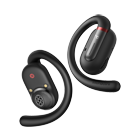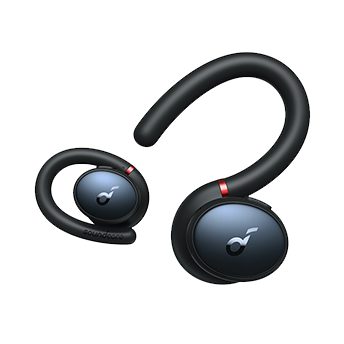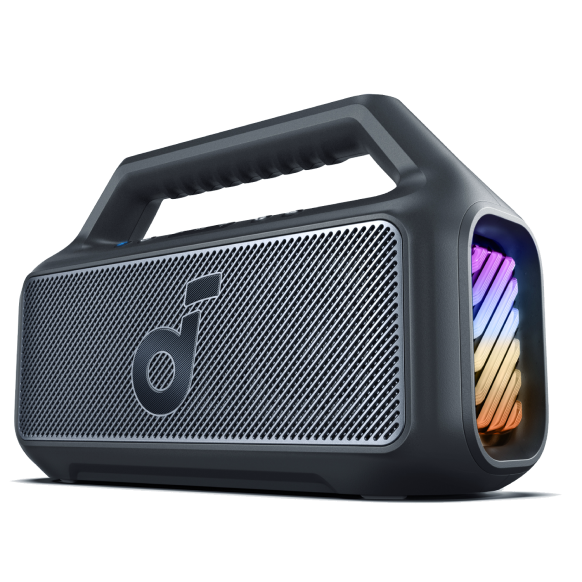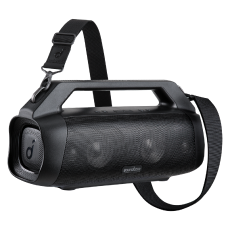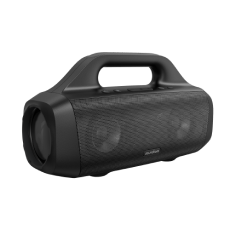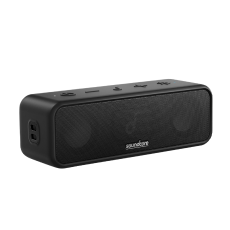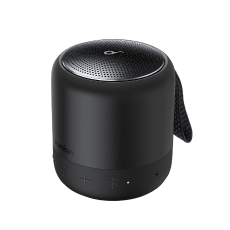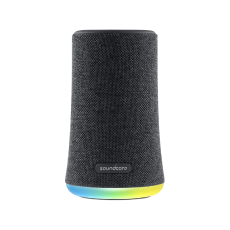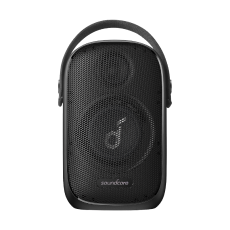In the world of audio, one term you'll often come across is "frequency response." It's a crucial factor that can significantly influence your listening experience, especially when it comes to headphones.
But what is frequency response in headphones? How does it affect the sound you hear? And what is a good headphone frequency response?
In this extensive guide, we'll look into understanding frequencies and the concept of frequency response in headphones. We'll look at what it is, how it's measured, and how it can affect your audio experience.
Whether you're a seasoned audiophile or a casual listener, understanding frequency response can help you choose the proper headphones and appreciate your music on a whole new level. So, what does frequency response mean in headphones?
What is Frequency Response in Headphones?
When you're on the hunt for the perfect pair of headphones, one term you'll often come across is "frequency response." But what is the frequency of sound? And how does frequency affect sound in headphones?
Frequency response in headphones refers to the range of audio frequencies that the headphones can reproduce. It's essentially a measure of how well and accurately the headphones can play back the bass, mids, and treble frequencies. But first, what is Hz frequency? And what does Hz stand for? What does hertz measure?
Hz, or Hertz, is the unit of frequency in the International System of Units (SI). It is used to measure the number of cycles per second. In terms of sound, a Hz frequency refers to the number of sound waves that pass by each second. For example, a sound with a frequency of 20 Hz completes 20 cycles per second.
- Bass Frequencies: Bass frequency ranges are the low-end frequencies, typically ranging from 20Hz to 300Hz. They give depth to the sound and are responsible for the "thump" you feel in songs.
- Mid Frequencies: Ranging from 300Hz to 4kHz, these frequencies represent the human voice and many musical instruments. They give clarity and presence to the sound.
- Treble Frequencies: These are the high-end frequencies, ranging from 4kHz to 20kHz. They add sparkle and crispness to the sound, making instruments like cymbals and violins shine.

By understanding the frequency response of headphones, you can choose a pair that aligns with your listening preferences. Whether you're a bass enthusiast or someone who loves crystal clear vocals, there's a pair of headphones out there with the right frequency response for you.
What Frequency Can Humans Hear
The world is full of sounds, from the gentle rustling of leaves to the powerful roar of jet engines. But did you know that our ears have limits? There's a specific range of frequencies that the human ear can detect, known as the audible frequency range.
Humans can typically hear sounds in the frequency range of 20Hz to 20kHz. This range represents the spectrum of sounds that are audible to the average person.
- 20Hz: This is the lowest frequency that the human ear can detect. It's the deep bass that you can feel more than hear. Think of the rumble of an earthquake or the lowest notes on a large pipe organ.
- 20kHz: On the other end of the spectrum, this is the highest frequency we can hear. It's a very high-pitched sound, like the ringing of cymbals or the chirping of birds.
However, it's worth noting that this range can vary among individuals. Factors such as age, exposure to loud noises, and even genetics can influence one's hearing range. For instance, as people age, their ability to hear higher frequencies tends to diminish.
When considering headphones, it's essential to understand the human hearing frequency range. This ensures that the headphones you choose can reproduce the sounds that are most important and audible to you.
What are the Different Frequency Ranges in Headphones
In headphones, the audio frequency spectrum is typically divided into several different frequency ranges, each of which plays a specific role in reproducing sound. Let's delve into the different frequency ranges you might encounter in headphones:
- Standard Frequency Range (20Hz to 20kHz): This is the most common frequency range in headphones, mirroring the audible frequency rangeof the human ear. Headphones with this range can reproduce most sounds that the average person can hear.
- Extended Low-Frequency Range (below 20Hz): Some headphones are designed to reproduce frequencies below 20Hz. These frequencies are often felt rather than heard, adding a sense of power and depth to the music. If you're a fan of bass-heavy genres like EDM or hip-hop, you might appreciate headphones with an extended low-frequency range.
- Extended High-Frequency Range (above 20kHz): Other headphones can reproduce frequencies above 20kHz. While these frequencies are beyond the range of human hearing, some people believe they add a sense of spaciousness and detail to the music.
The best frequency response for headphones depends on your personal preferences and the type of music you listen to. Some people might prefer a more balanced sound, while others might prefer headphones that emphasize the bass or treble frequencies.
What is a Good Frequency Response for Headphones
What is a good frequency response for headphones? The answer isn't as straightforward as you might think. A good frequency response is one that suits your personal listening preferences.
- Balanced Frequency Response: Some people prefer headphones with a balanced frequency response, where the bass, mids, and treble are equally represented. This can provide a more accurate and natural sound, making it a good choice for genres like classical or jazz.
- Bass-Boosted Frequency Response: Other people prefer headphones with a bass-boosted frequency response, where the low frequencies are emphasized. It is a defining and much-loved feature of bass headphones. They can delivera powerful and deep bass experience that truly stands out. By accentuating the bass notes in the audio playback, they bring a whole new dimension to the music, making every beat and bassline more pronounced and impactful.
- Treble-Boosted Frequency Response: Yet others prefer headphones with a treble-boosted frequency response, where the high frequencies are emphasized. This can make the music sound more detailed and airy, making it a good choice for genres like pop or rock.
How to Measure Sound Frequency
Understanding the concept of frequency response is one thing, but how do we actually measure it? Here's a simple breakdown of how sound frequency is measured in headphones:
- Test Tones: The first step in measuring sound frequency involves playing test tones through the headphones. These tones cover the entire range of frequencies that the headphones are capable of reproducing, from the lowest bass to the highest treble.
- Recording the Output: The headphones are placed on a device known as a dummy head, which has microphones in its ears. As the test tones are played, the microphones record the output of the headphones.
- Analyzing the Data: The recorded data is then analyzed using the software. The software measures how loud the output is at each frequency, creating a profile of the headphones' frequency response.
- Creating a Frequency Response Graph: The data is then plotted on a graph, with frequency on the x-axis and volume (in decibels) on the y-axis. This graph is the frequency response graph of the headphones.
Take note, a frequency response graph doesn't tell the whole story. It doesn't account for factors like soundstage (how the music seems to surround you), imaging (how well the headphones can position sounds), or the overall timbre (character) of the sound. It's just one tool to help you understand how a pair of headphones might sound.
Conclusion
Understanding the concept of frequency response in headphones can seem daunting at first. However, once you grasp the basics, it becomes a powerful tool in your quest for the perfect sound. The best frequency response for headphones is not a universal standard but rather a personal preference. It's all about what sounds best to your ears.
Whether you're a bass enthusiast or a treble lover, understanding what frequency response is in headphones can help you find the headphones that will deliver your favorite tunes exactly how you like them. So, the next time you're shopping for headphones, don't just look at the price or the brand. Take a moment to consider the frequency response. Your ears will be grateful to you.
FAQ
What Frequencies Are Harmful to Humans?
While sound is a normal part of our everyday environment, excessively loud sounds can be harmful to humans. Sounds that are 85 decibels or higher can cause hearing damage if you're exposed to them for extended periods. This is roughly the volume of heavy city traffic. Extremely high-frequency sound (above 20kHz) and low-frequency sound (below 20Hz) are generally not harmful because they're outside of our range of hearing.
Is Higher or Lower Frequency Response Better?
Neither higher nor lower frequency response is inherently better. It all depends on your personal listening preferences. If you enjoy bass-heavy music, you might prefer headphones with a good low-frequency response. On the other hand, if you enjoy music with lots of detail and clarity, you might prefer headphones with a good high-frequency response.
How Does Frequency Affect Sound?
Frequency affects the pitch of the sound. Higher frequencies correspond to higher-pitched sounds, like the chirping of a bird or the notes from a flute. Lower frequencies correspond to lower-pitched sounds, like the rumble of thunder or the notes from a bass guitar. In terms of headphones, the frequency response can affect how well these high and low sounds are reproduced.








